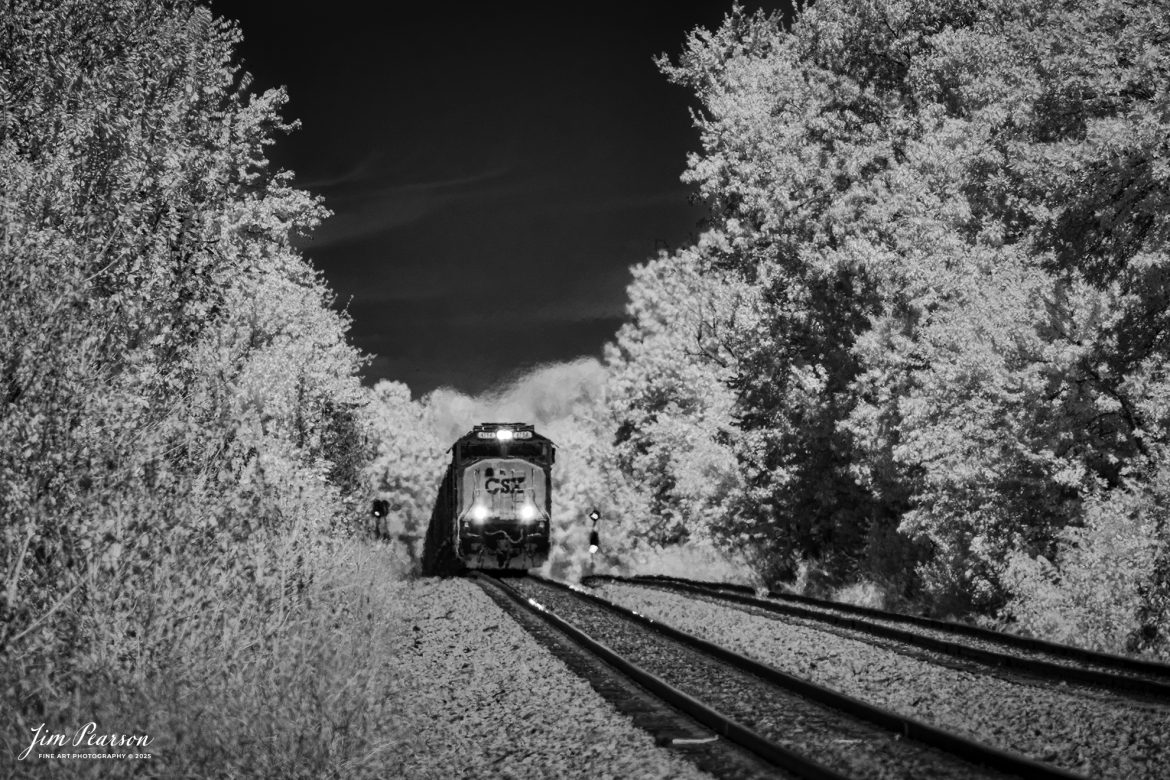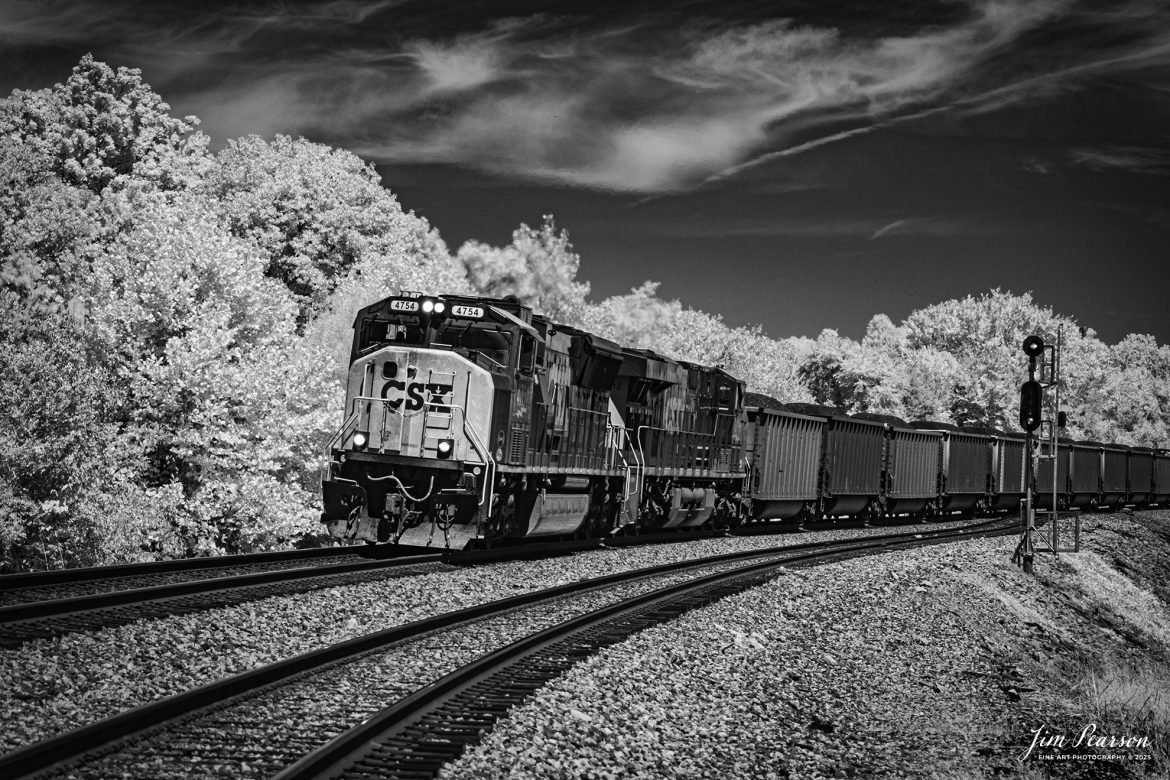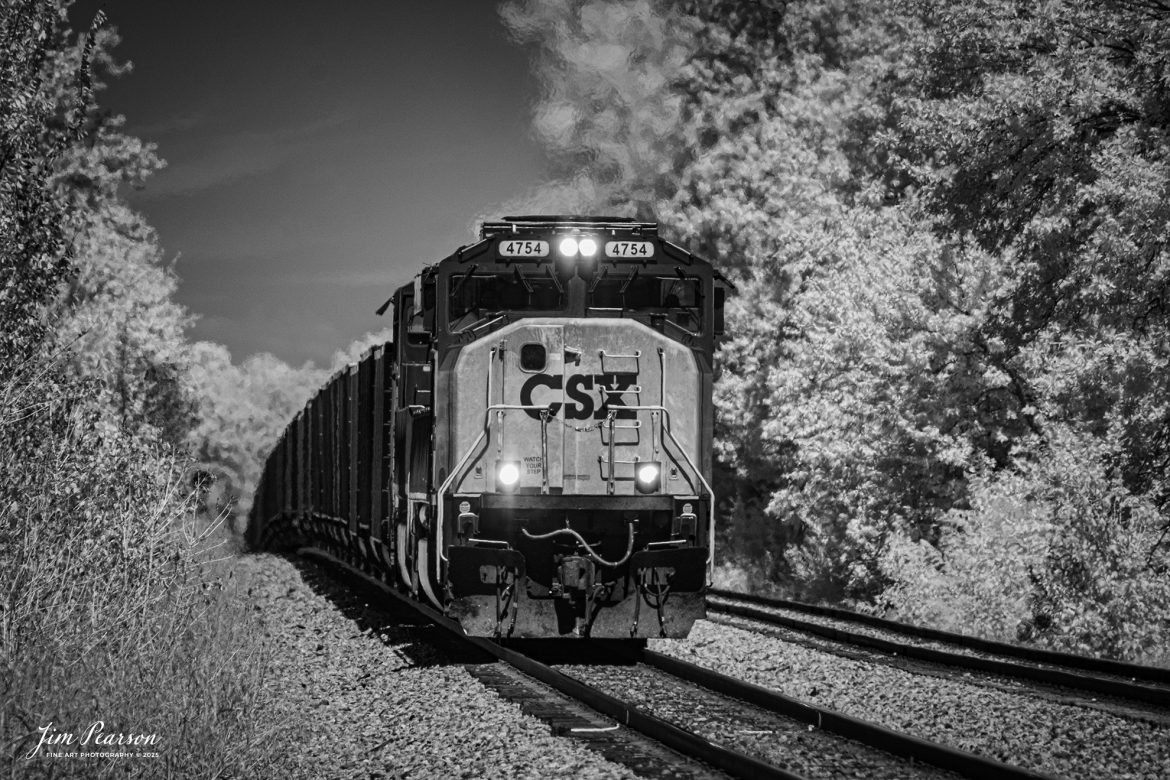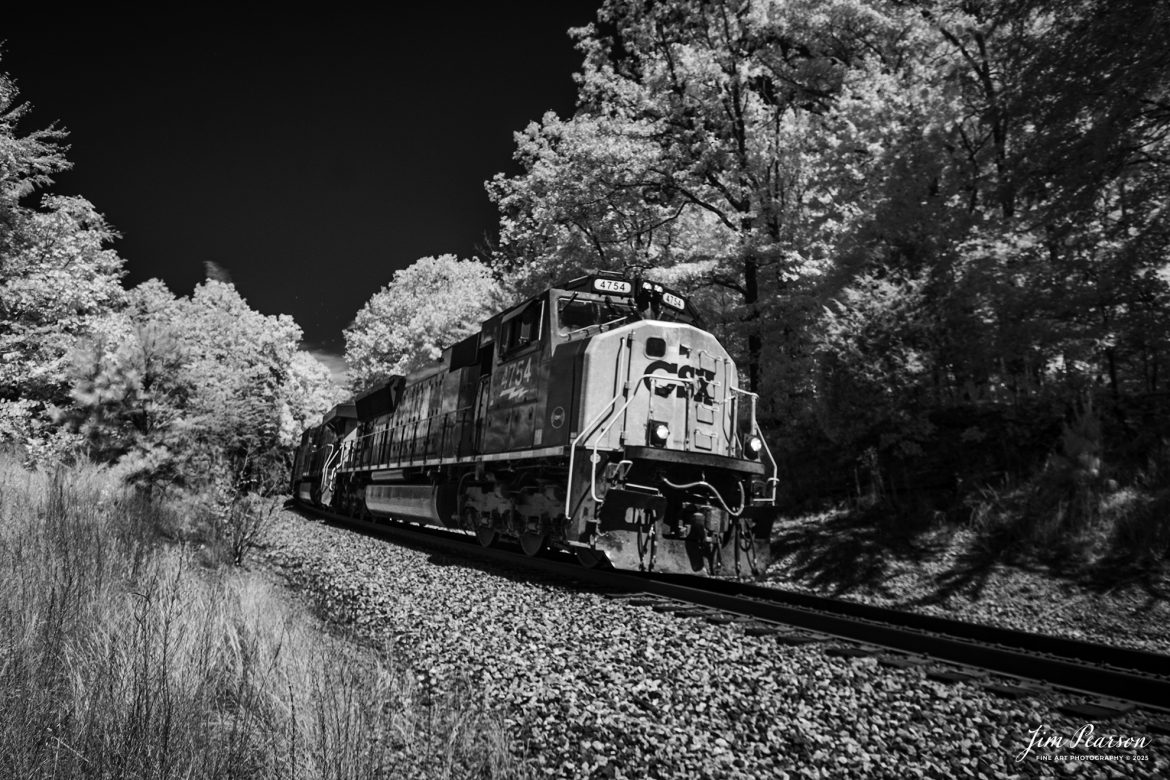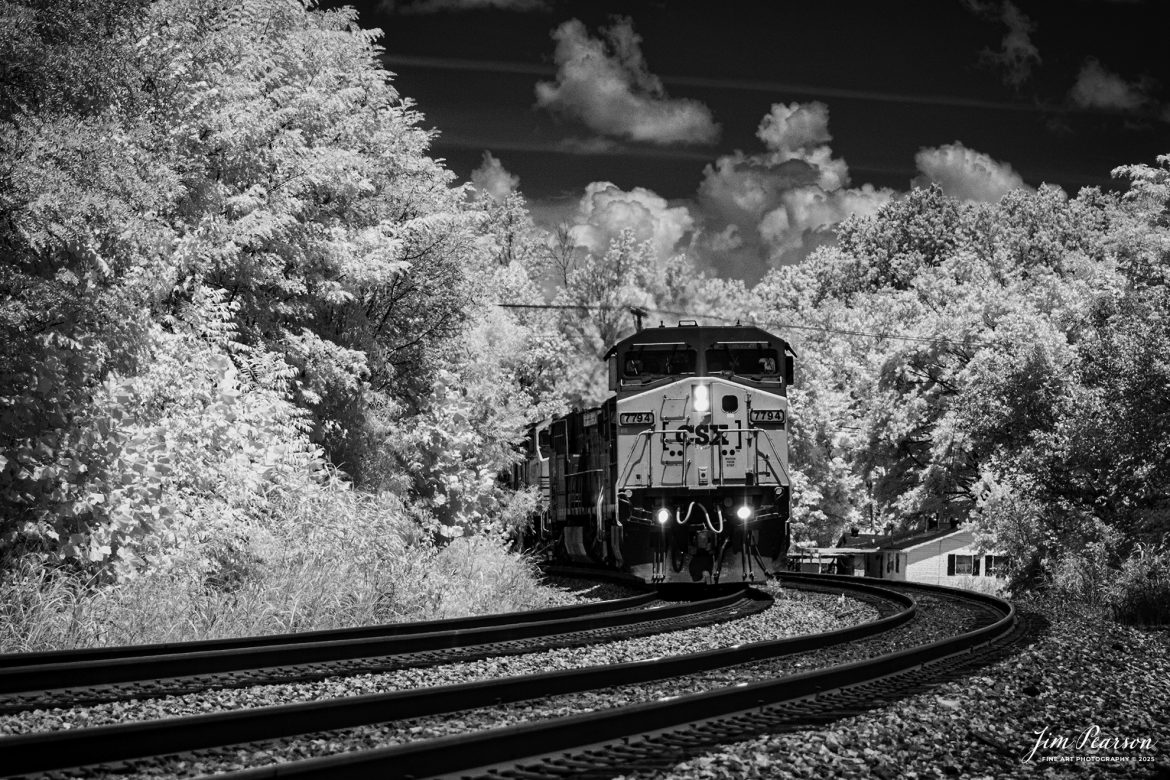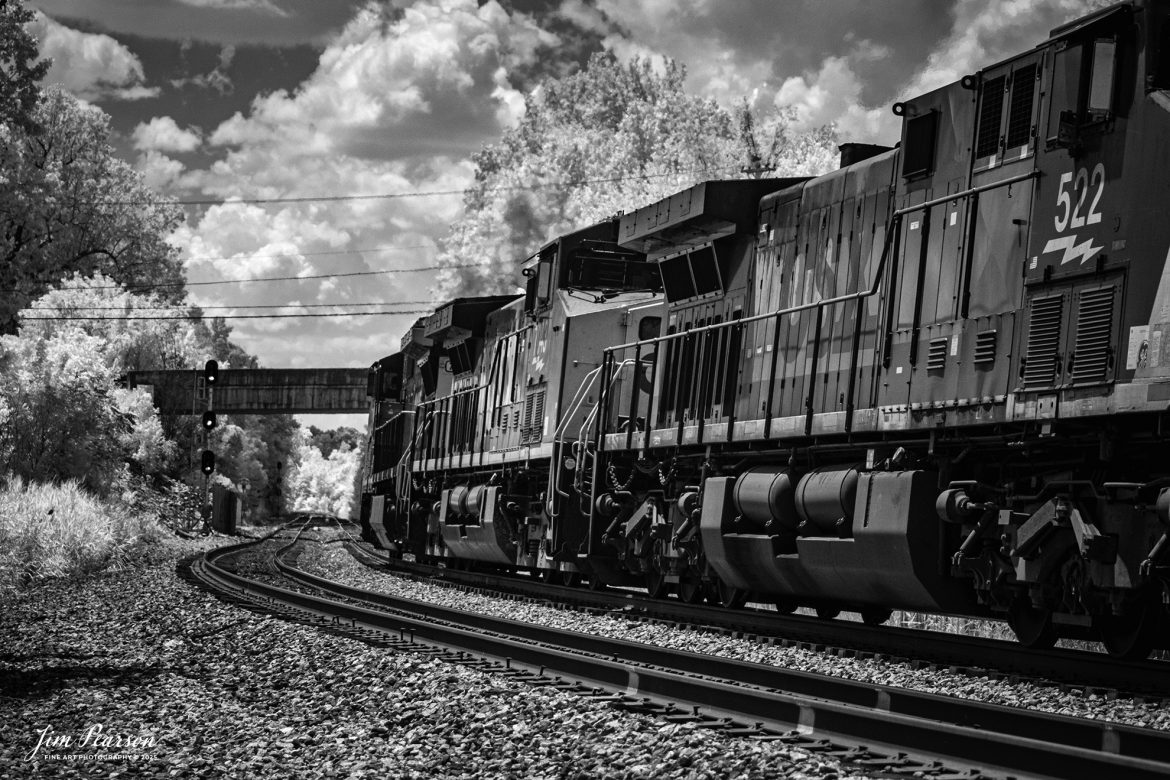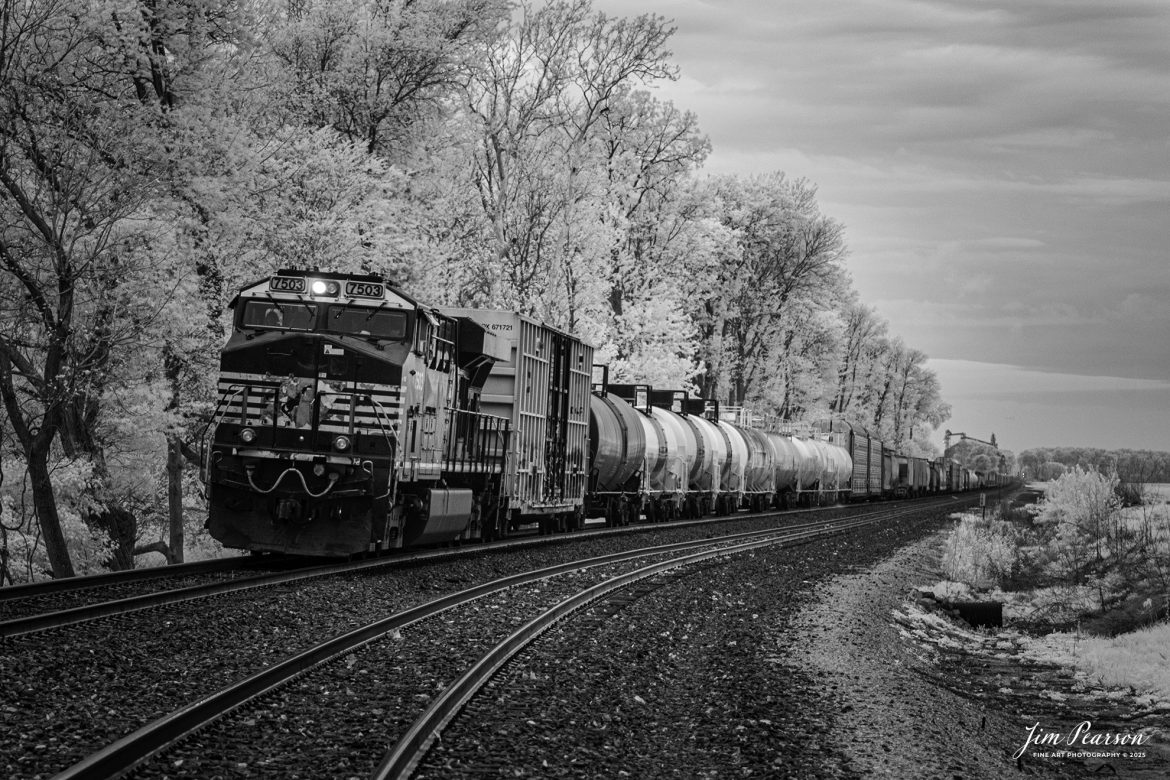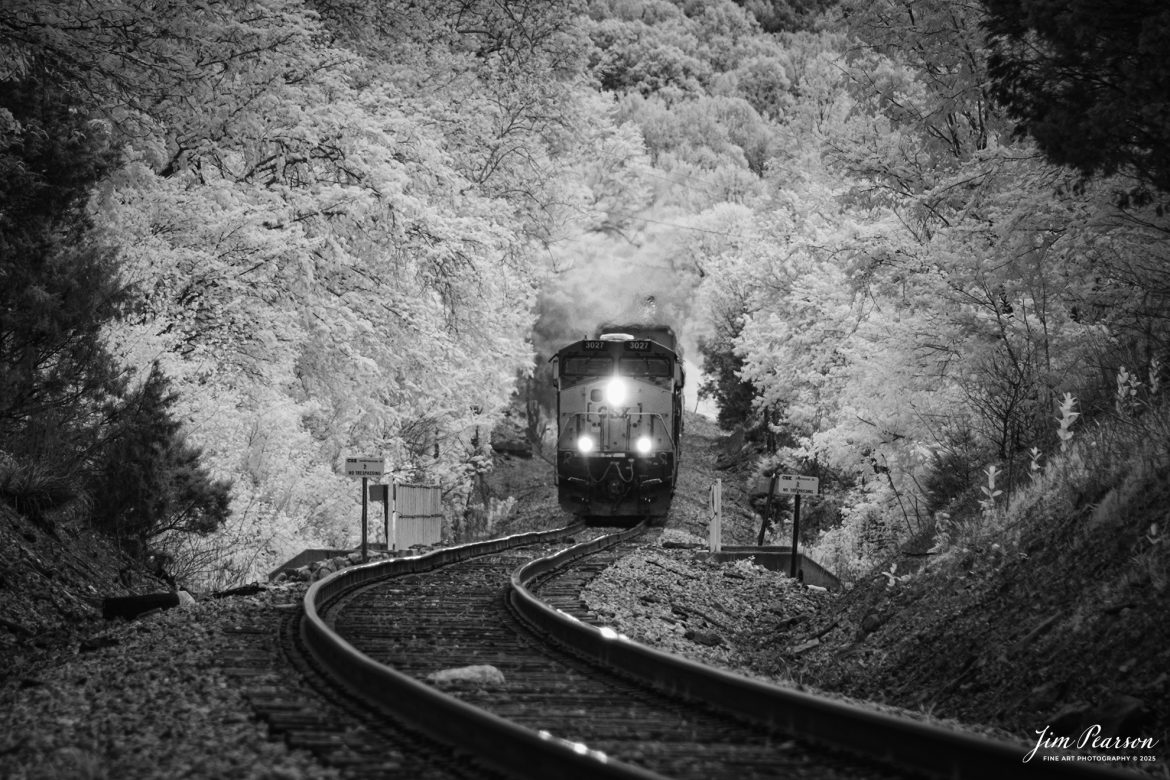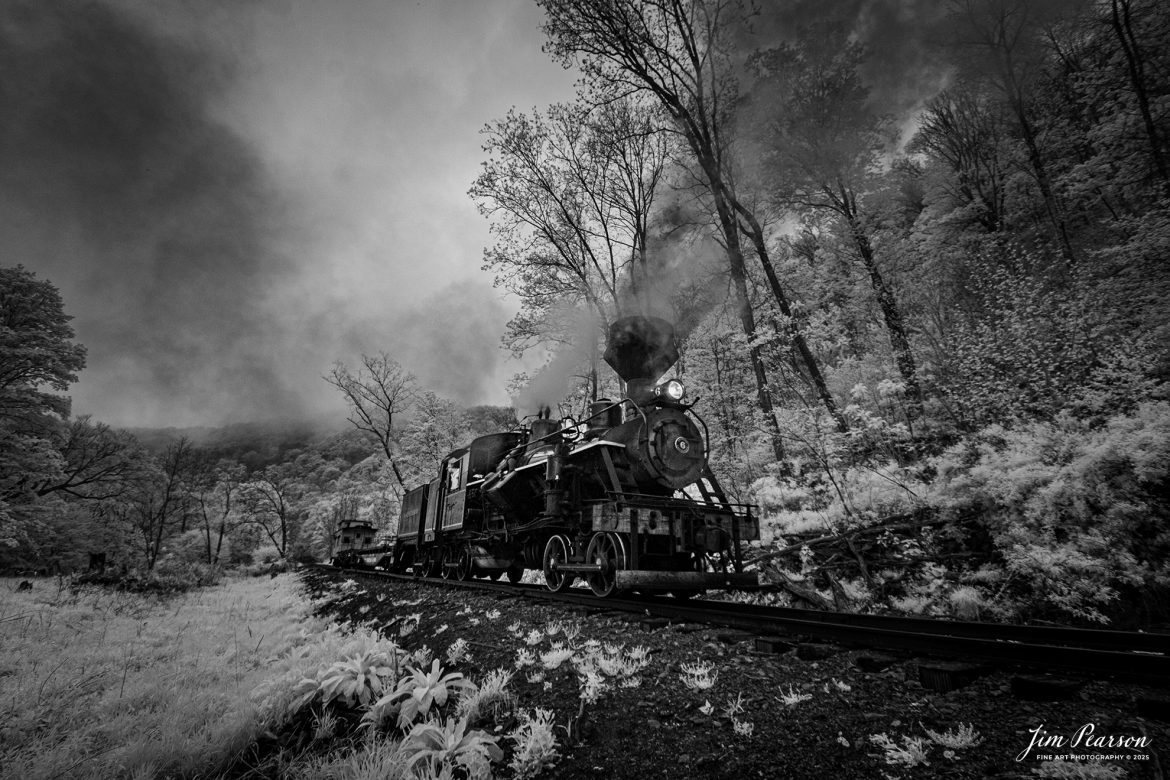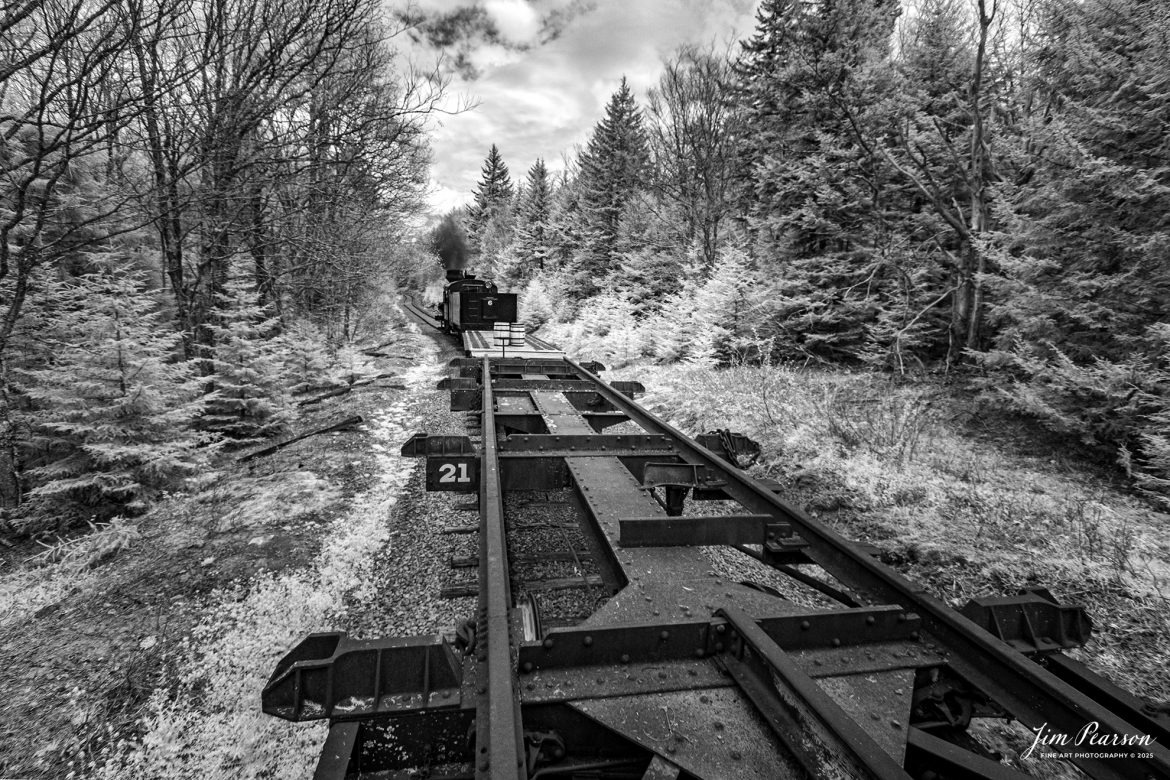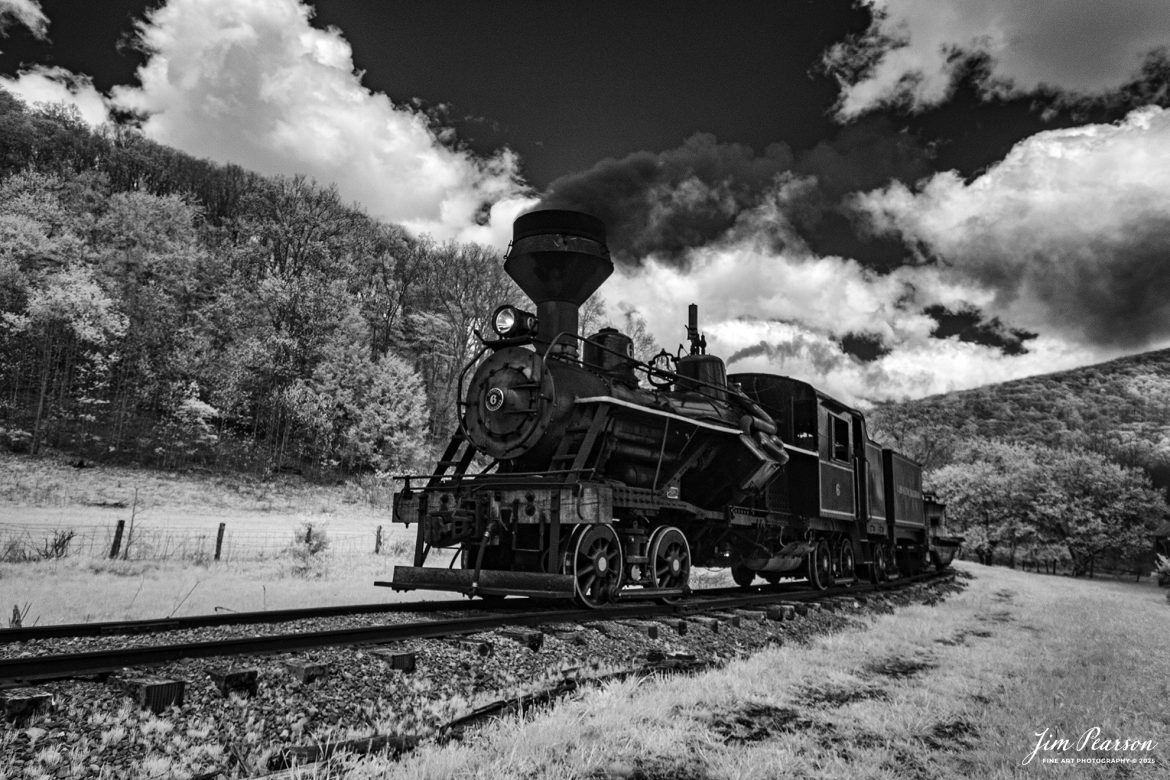In this week’s Saturday Infrared photo, we catch Engineer Noah Barkley as he keeps a watchful eye on the track ahead from Cass Scenic Railroad Heisler #6 as they pull through the countryside at Wanless on the way to Cass, West Virginia, during the Cass Spring Photographers Special,on May 4th, 2025.
According to the Mountain Rail West Virginia Website: The Meadow River Lumber No. 6 was built by the Heisler Locomotive Works in Erie, PA, in 1929 for the Bostonia Coal & Clay Products Company of New Bethlehem, PA.
The Heisler was sold to the Meadow River Lumber Company at Rainelle, WV in 1939, where it was rostered as No. 6. She retired from the lumber company in 1965 and was purchased by the purchased it by the state of West Virginia purchased. The engine ran under its own steam from Rainelle to its new home in Cass in December 1966. No. 6 would begin operating on the railroad in 1968. The Heisler is the fastest geared locomotive in the Cass collection.
Tech Info: Fu, RAW, Nikon 10-25 @ 10mm, f/4.5, 1/2000, ISO 400.


